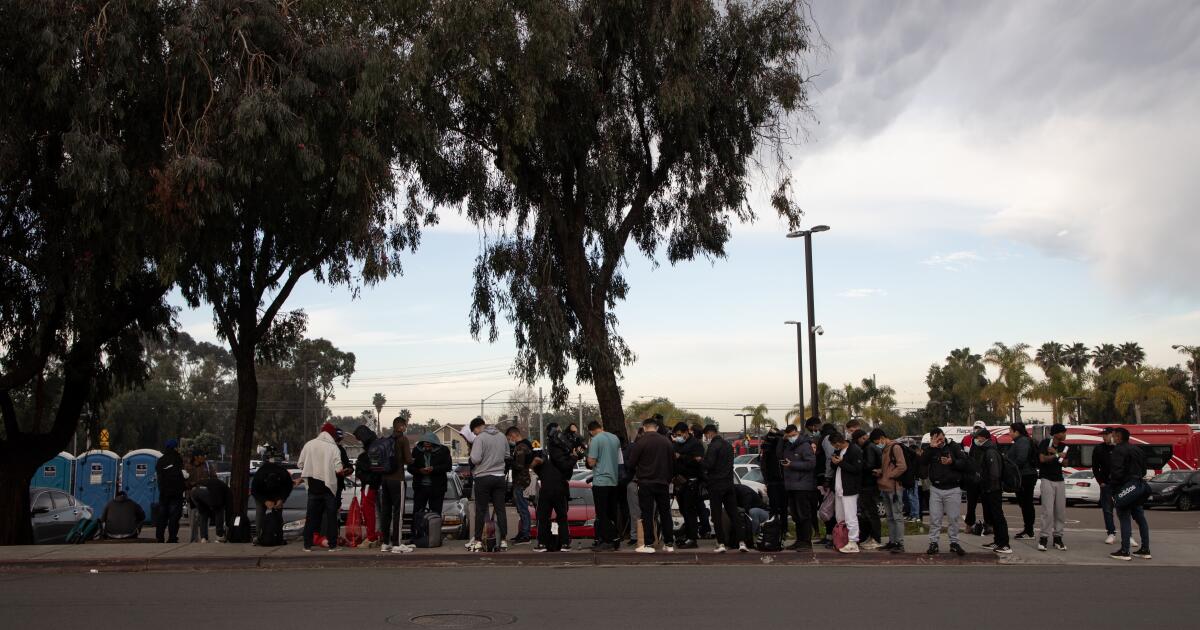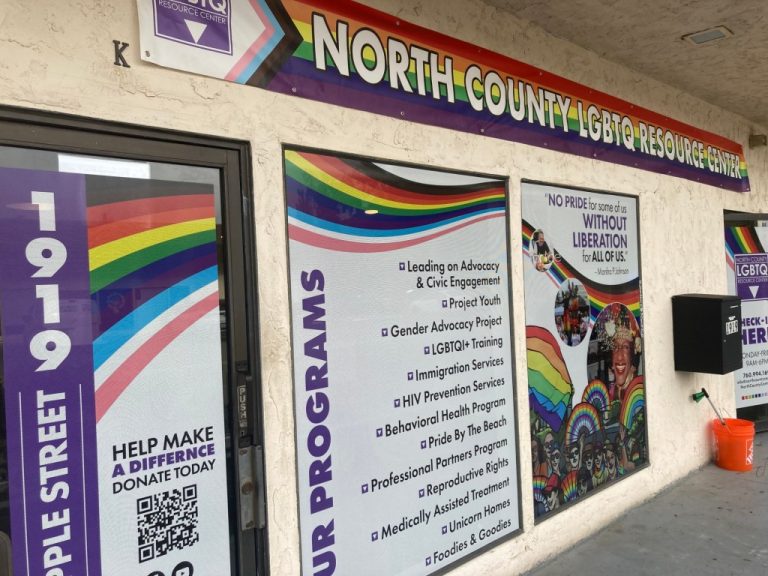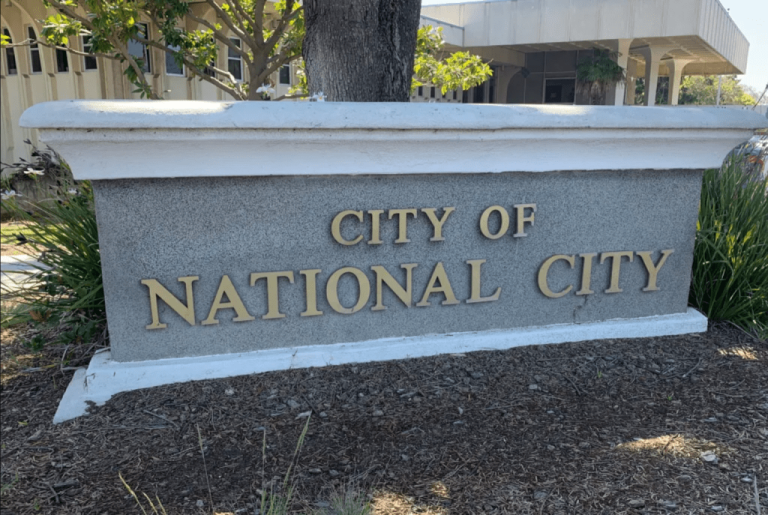
The county Board of Supervisors approved a plan Tuesday to explore outside funding for a long-term transfer center and respite shelter to help migrants arriving in the San Diego region reach their final destinations.
The board voted 4-1 to accept a concept paper and advocacy plan prepared by county officials that would search for federal funding and philanthropic opportunities to support a center and avoid having U.S. Border Patrol release migrants on the streets.
Supervisor Jim Desmond cast the lone vote in opposition, saying the immigration system needs to be fixed. “By allowing this federally funded long-term shelter here, it’s just being complicit with the federal government and the current mess,” he said.
The vote came days after a temporary migrant welcome center closed earlier than expected. The $6 million in county funding that was used to operate it was supposed to last until the end of March.
As a result, the Border Patrol resumed daily releases of adult migrants at a public transit center in south San Diego on Friday. More than 2,000 migrants have been dropped off in buses at the station in the last four days, according to Desmond.
U.S. Customs and Border Protection, Border Patrol’s parent agency, said on Friday that it coordinates with “state, local and non-governmental partners to ensure the safe and orderly onward movement of migrants when they are released from our custody following screening and vetting as part of their immigration proceedings.”
The welcome center, which was operated by SBCS — formerly known as South Bay Community Services — provided supportive services such as food, Internet and transportation to more than 81,000 people over the past few months.

U.S. Border Patrol is dropping off migrants at the Iris Avenue Transit Center. Aid groups are assisting with food, water and information in Otay Mesa on Monday.
(Alejandro Tamayo/The San Diego Union-Tribune)
Now, recently released migrants are left looking for an Internet connection at the Iris Avenue Transit Center to communicate with relatives and ask for help buying a plane ticket.
The vast majority of migrants — about 99 percent — spend only a short time in the county before moving on to their final destinations, according to officials.
On Feb. 6, the board voted to develop a sustainable long-term plan to assist migrants. The recommendations were presented Tuesday by Sarah Aghassi, the county’s interim chief administration officer.
“What we have learned in the last several months is that our short-term interventions are not sustainable, when the root cause of failed immigration policy has not been addressed,” she said.
The proposal includes a federal-funded migrant and shelter center “that can handle the fluctuating numbers of asylum seekers, both the vulnerable populations currently served by Catholic Charities and Jewish Family Service, and those who need onward travel assistance,” she said.
In the concept paper, county officials recommended that the facility have a capacity for 500 people and that it be located either near the border or in central San Diego to easily connect to transit hubs.
The approximate cost ranges from $12 million to $345 million — the high end for a potential downtown location — depending on options to lease, buy or rehabilitate an available facility, according to the report.
The board’s approval also authorizes officials to “apply for any additional funds that become available for migrant sheltering and services that provide upfront funding for immediate use at the region.”

Migrants hop on their phones in Otay Mesa West on Monday after being dropped off by Border Patrol.
(Alejandro Tamayo/The San Diego Union-Tribune)
The Federal Emergency Management Agency’s Shelter and Services Program, or SSP, provides funds to non-federal entities that provide shelter and other eligible services to migrants. However, the funds aren’t provided upfront and are rather reimbursed to entities later — something the county is hoping to avoid.
“The conversation has largely been that SSP is currently the only funding stream that sort of addresses what we are doing right now, which is true, but what we need is a little something extra,” said Caroline Smith, director of Economic Development and Government Affairs.
The board also discussed an item by Supervisor Joel Anderson that initially intended to urge President Joe Biden to “temporarily close the U.S.-Mexico border” in response to street releases.
Chair Nora Vargas, who called herself “proud to be binational” and “proud to be a fronteriza,” firmly opposed the item and pushed for clarification.
“Let’s put aside the feelings of the emotion and let’s talk about practicality. Let’s talk about what this means to not only this region, but to the state and to the country,” she said. Vargas acknowledged the 140,000 people that cross the border daily to work in San Diego County.
“Closing the border is not an option in a binational region that is thriving, that is economically integrated, culturally integrated, and a region that really understands the power of who we are in this binational community,” she said.
Anderson clarified that “this letter isn’t to shut down the border, it’s to shut down the immigration until we can get control.” He said his office was planning on meeting with White House officials on Wednesday.
Vice Chair Terra Lawson-Remer made a substitute motion to replace the proposal with one that instead sends a letter to support a bipartisan immigration reform bill to address the situation at the border. The board approved the motion unanimously.
“My greatest concern is for my constituents and for the asylum seekers who are abandoned in our community, so I am pleased the Board of Supervisors is united in calling on Congress to pass immigration policy to permanently secure our border,” Anderson said in a statement sent after the voting.
Staff writer Emily Alvarenga contributed to this report.






